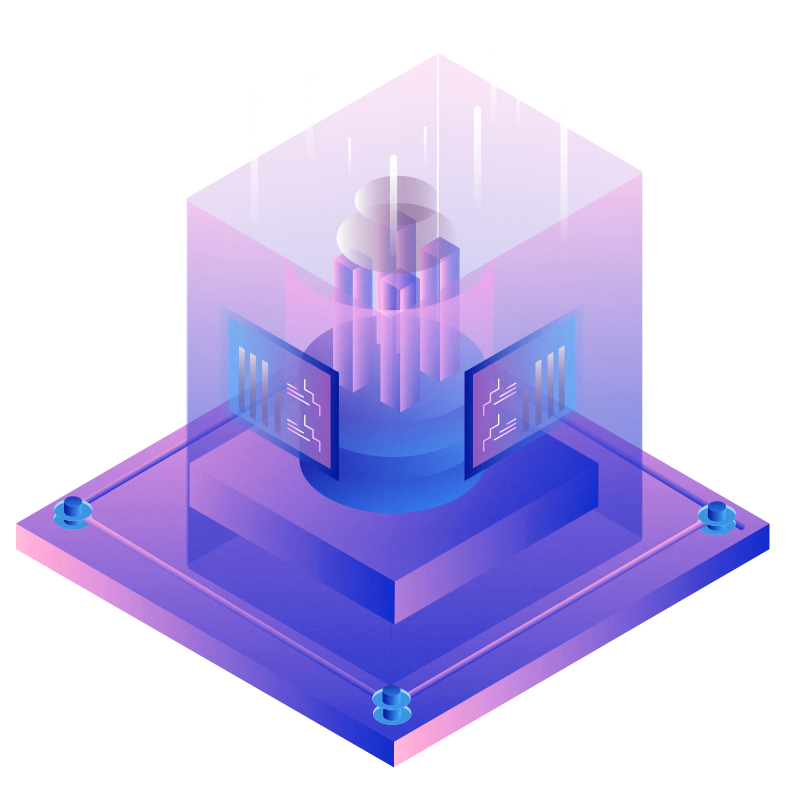The unique value of the LAC token in the blockchain metaverse.
The LAC token is the core of ourblockchain-based metaverse ecosystem.
It is not merely a medium of exchange but serves as a bridge connecting users, creators,
and developers. LAC token holders gain access to multiple functionalities, such as
participating in platform governance, earning rewards within the ecosystem, purchasing
virtual assets, and unlocking unique experiences. Through the LAC token, users can
create and share economic value within the metaverse, while also fostering the growth
and expansion of the community. The design of the LAC token is based on an incentive
mechanism aimed at enhancing user engagement and supporting sustainable development
through a community-driven approach.
The Purpose and Significance of This White Paper
This white paper aims to provide a detailed explanation of the (LAC)
project’s vision, technical architecture, tokenomics, and its unique value within the
blockchain-based metaverse. Through a clear project roadmap, we hope to attract the
attention and involvement of investors, developers, and users, thereby collaboratively
building a thriving blockchain metaverse ecosystem. The white paper serves not only as a
bridge for communication with external stakeholders but also as a commitment to
transparency and trust in the project. With this white paper, we aim to showcase the
profound impact of the LAC project and to promote its acceptance and application on a
global scale.
Concept of the Blockchain Metaverse
Users can freely create within it
The blockchain metaverse is a multidimensional digital space that combines virtual reality (VR), augmented reality (AR), blockchain technology, and social interaction.
Immersive Experience:
Users can gain realistic virtual interaction experiences through
VR and AR technologies, participating in social activities, gaming, and other
engagements.
Decentralization:
The application of blockchain technology ensures that the governance
and operation of the metaverse do not rely on a single entity, but are managed
collectively by the community, enhancing fairness and transparency.
Digital Assets:
Users can create, purchase, and trade various digital assets within the
blockchain metaverse, such as virtual land, items, and artworks, granting them real
economic value.
Social Interaction:
Users can interact with others in real-time within the metaverse,
establishing social relationships and participating in community activities, thereby
enhancing their sense of involvement and belonging.
Creation and Value Exchange:
Users can earn income by creating virtual items, artworks,
and other assets that hold real economic value in the marketplace. The LAC token serves
as the medium of exchange, facilitating the flow and exchange of value.
Community Participation:
The blockchain metaverse encourages users to actively
participate through various incentive mechanisms (such as token rewards and reputation
systems) to enhance user involvement and loyalty. Users are not only consumers but also
creators and governors.
Collaboration and Co-Creation:
The blockchain metaverse provides an open platform for
users to collaborate, develop new projects, and share resources and experiences, forming
a positive cooperative ecosystem. This model of social interaction promotes innovation
and diversity.
Decentralized Storage:
Blockchain technology allows data to be stored across multiple
nodes, reducing the risk of single points of failure and ensuring data security and
privacy.
Transparency and Traceability:
The transaction records on the blockchain are public and
transparent, allowing all users to view and verify them. This transparency builds trust
among users and helps prevent fraud and malicious activities.
Smart Contracts:
Smart contracts automatically execute the terms of agreements without
the need for intermediaries, ensuring the security and efficiency of transactions. This
automation reduces operational costs and enhances the user experience.
Identity Verification and Asset Ownership:
Blockchain technology enables decentralized
verification of user identities, ensuring the ownership of digital identities and
assets. This trust mechanism enhances user engagement within the metaverse.

Our Advantages
Applications of Smart Contracts in the Metaverse
As one of the core technologies of, smart
contracts play a crucial role in the creation, trading, and management of virtual
assets.
Simplicity of Creating Virtual Assets:
Users can easily create their own virtual assets using pre-set smart contract templates. Whether it’s virtual land, digital artwork, or in-game items, users simply need to input essential information such as name, description, and image to generate a unique asset. This automated process reduces cumbersome procedures, allowing more users to participate in asset creation.
Uniqueness and Non-Fungibility of Assets:
Each virtual asset created through a smart contract has a unique identity identifier, such as a specific address or token ID on the blockchain. This design ensures the distinctiveness of each asset in the digital world, preventing forgery or duplication. Users can easily verify the authenticity and uniqueness of an asset through its identifier.
Traceability and Transparency:
Smart contracts record all transaction histories related to virtual assets on the blockchain, including creation, purchase, sale, and transfer information. This transparent recording mechanism allows users to check the origin and ownership changes of an asset at any time, enhancing trust in the asset. This traceability not only protects user rights but also promotes healthy market development.
Automated Trading and Management:
The execution of smart contracts is automated; once users set the contract terms, trading and management of assets can be completed without intermediaries. For example, users can set conditions for automatic sales, and once these conditions are met, the smart contract will automatically execute the trade. This automated management approach significantly improves trading efficiency and reduces risks associated with human intervention.
Diverse Applications of Assets:
With smart contracts, virtual assets are not limited to a single function. Users can utilize these assets in various application scenarios, such as social interactions in virtual reality environments, participation in gaming activities, or for investment purposes. This diversification enhances the value of virtual assets and promotes user engagement.
Liquidity and Value Assurance of Assets:
The liquidity of LAC tokens directly affects the market performance of virtual assets. By encouraging users to utilize LAC within the platform, the ecosystem can maintain efficient asset liquidity while also enhancing the value of the tokens themselves.








